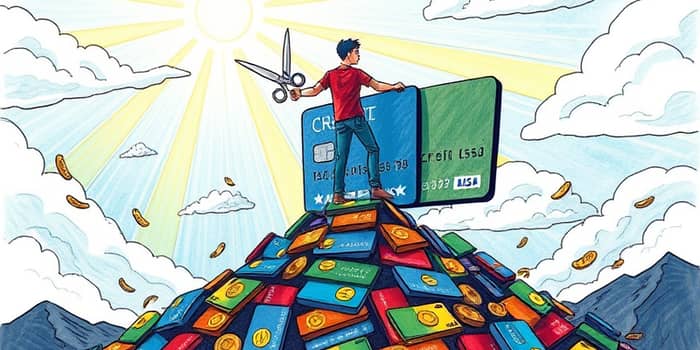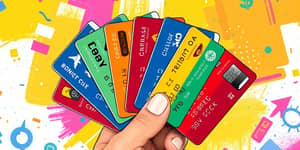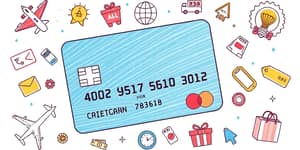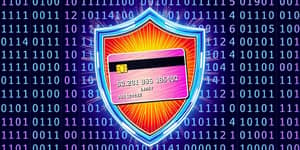Credit card balances surged across the country in late 2024, with more than 11% of cardholders making only minimum payments. This pattern can trap consumers in a cycle of mounting interest and stress. Today, you’ll discover a holistic, step-by-step path to reclaim control, pay down balances, and build lasting financial freedom.
Understanding the Burden of Credit Card Debt
Credit card debt isn’t just a number on a statement—it carries emotional weight and financial risk. When you make only minimum payments, your balance diminishes at a snail’s pace. Interest accrues daily, often at rates exceeding 18% or higher, turning each purchase into a costly burden.
Consider this: a $2,000 balance at 18% APR with a minimum payment of 2% takes over 30 years to pay off and costs over $4,000 in interest. Recognizing these minimum payment traps limit progress is the first step in forging a better strategy.
Building a Realistic Budget
Before tackling debt, you need a clear map of where every dollar goes. A budget illuminates spending patterns and pinpoints areas ripe for savings.
- List all sources of monthly income and categorize every expense.
- Separate needs (housing, groceries, utilities) from wants (entertainment, dining out).
- Identify at least two expenses to cut or reduce—like subscriptions or takeout.
- Allocate freed-up cash toward your highest-interest card.
Switching discretionary charges from credit to cash or debit can curb impulse buys. Every dollar you save here can redirect extra funds toward debt and accelerate progress.
Proven Debt Repayment Methods
With a budget in hand, choose a repayment strategy that aligns with your personality and goals.
- Debt Snowball Method: Pay off the card with the smallest balance first, then roll that payment into the next target. This builds momentum and motivation.
- Debt Avalanche Method: Focus on the card with the highest interest rate, while maintaining minimums on others. This approach saves the most on interest over time.
Automation ensures consistency. Set up auto-pay at least for the minimum due, then schedule extra biweekly transfers if your cash flow allows. Treat debt service like a non-negotiable bill.
Comparing Snowball and Avalanche
Leveraging Windfalls and Transfers
Unexpected cash—tax refunds, bonuses, gift money—can powerfully shrink balances. Instead of splurging on non-essentials, direct windfalls straight to debt.
Balance transfers offer another tool. By moving high-rate debt to a card with a 0% introductory APR, you can pause interest charges. Be mindful of transfer fees (usually 3–5%) and the promo period. Pay off the balance before the standard APR kicks back in to truly accelerate your debt payoff journey.
Consolidation Loans and Counseling
For borrowers juggling multiple cards, a debt consolidation loan can merge balances into a single payment at a fixed rate. Shop around for competitive terms and ensure the monthly payment fits your budget.
If you find it hard to negotiate or structure payments, certified credit counselors provide free or low-cost guidance. They can often secure rate reductions or develop a tailored repayment plan without the risks of predatory settlement firms.
Sustaining Healthy Credit Habits
Managing debt is only half the journey. Preventing future pitfalls means adopting positive credit behaviors.
- Always pay bills on time; even one late payment can damage your score.
- Keep balances below 30% of each card’s limit to maintain a healthy utilization ratio.
- Review statements monthly for errors or unauthorized charges.
- Understand each card’s terms: APR, fees, grace periods.
These practices not only guard your credit score but also build unshakeable financial confidence over the long term.
Emotional Resilience and Motivation
Debt often carries shame and anxiety. A clear strategy can transform that stress into action. Set small milestones—like paying off your first $100—and celebrate each small debt victory to stay motivated. Visual trackers or spreadsheets can turn progress into a tangible, uplifting experience.
Remember that tackling debt is a journey, not a race. With each payment, you’re transforming financial stress into motivation and moving closer to freedom. If you slip, don’t despair—adjust your budget and recommit immediately.
Sample Impact of Accelerated Payments
Compare a $2,000 balance at 18% APR:
By doubling your payment, you can cut repayment time by over 90% and reduce total interest paid by more than 90%.
Conclusion: Your Path Forward
Managing credit card debt responsibly demands clarity, discipline, and persistence. By crafting a realistic budget, choosing a suitable repayment method, leveraging windfalls, and adopting healthy credit habits, you can stop debt from consuming your future.
Every payment you make is a victory, every reduction in interest a step toward building long-term wealth. Embrace this journey, stay committed, and you’ll transform your financial reality from stress to empowerment.
References
- https://www.nerdwallet.com/article/finance/credit-card-debt
- https://bettermoneyhabits.bankofamerica.com/en/debt/how-to-pay-off-credit-card-debt-fast
- https://consumer.ftc.gov/articles/how-get-out-debt
- https://www.aba.com/advocacy/community-programs/consumer-resources/manage-your-money/reduce-credit-card-debt-without-a-debt-settlement-company
- https://www.navyfederal.org/makingcents/credit-debt/debt-repayment-strategies.html
- https://www.experian.com/blogs/ask-experian/how-to-pay-off-high-interest-credit-cards/
- https://www.bankofamerica.com/banking-information/assistance/credit-cards/managing-credit-card-debt/
- https://www.phoenix.edu/blog/managing-credit-card-debt-and-fostering-good-credit-habits.html










